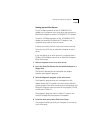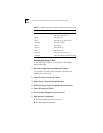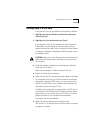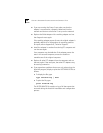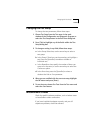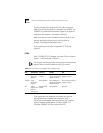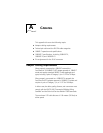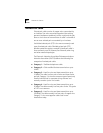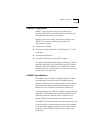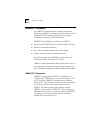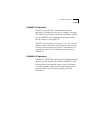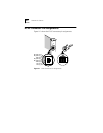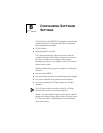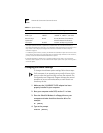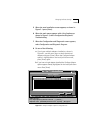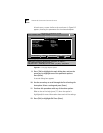
10BASE-T Operation A-3
10BASE-T Operation
10BASE-T is the Institute of Electrical and Electronics
Engineers (IEEE) 802.3 standard for Ethernet signaling over
unshielded twisted-pair wire at 10 Mbps.
Ethernet, as the most widely-used network protocol, uses
10BASE-T as its primary cabling scheme. Ethernet’s
characteristics include:
■ A data rate of 10 Mbps
■ A maximum station separation of 2.8 kilometers (1.7 miles)
using fiber
■ A broadcast architecture
■ A specific media-access control (MAC) scheme
The specified networking technology for Ethernet is its MAC
protocol called Carrier Sense Multiple Access with Collision
Detection (CSMA/CD). Ethernet uses CSMA/CD to prevent
network failures or collisions when two devices try to access
the network at the same time.
10BASE-T Specifications
The 10BASE-T name indicates a signaling speed of 10 Mbps
and twisted-pair wiring. Base stands for baseband, which
denotes a technique for transmitting signals as direct-current
pulses rather than being modulated onto separate carrier
frequencies. This is a feature of the Ethernet architecture.
A wiring topology using 10BASE-T specifies a wiring hub, cable
arranged in a star configuration, and unshielded twisted-pair
cable. Each node has a separate cable run that must not
exceed 328 feet (100 meters) from the node to the hub.
The 10BASE-T four-repeater (hub) rule states that you can use
no more than four repeaters between major LAN segments.
If you add a fifth repeater, the timing of the packets can be
impaired and the CSMA/CD media-sharing scheme may
break down.



